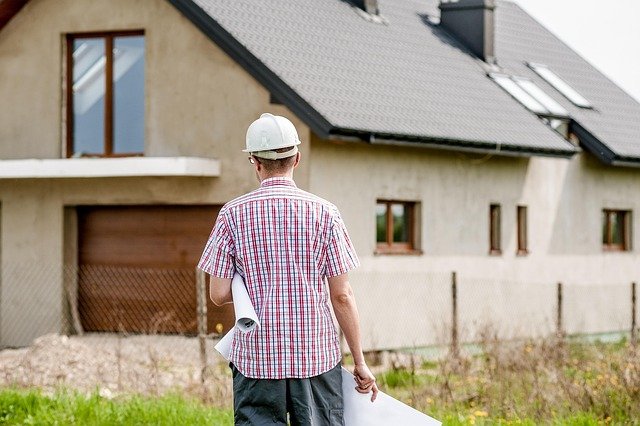Foundation Repair Costs In Australia: Understanding Your Options and Budget
Foundation issues can significantly impact a property's structural integrity and value. In Australia, where diverse soil conditions and climate variations play crucial roles in foundation stability, understanding repair options and associated costs is essential for homeowners. This article explores the various foundation repair methods available across Australia, their typical costs, and what factors might influence your budget when addressing foundation problems.

What Determines Foundation Repair Costs in Australia?
The cost of repairing a home’s foundation in Australia varies significantly based on several key factors. The foundation type—whether concrete slab, strip footing, or stumped—directly impacts repair methodology and pricing. The extent and nature of the damage also play crucial roles, with minor cracks costing substantially less than major structural issues. Property location influences costs too, with urban areas like Sydney and Melbourne typically commanding higher service rates than regional locations. Additionally, accessibility challenges such as limited workspace or difficult terrain can increase labor requirements and equipment needs, further affecting the final repair bill.
Common Foundation Repair Methods and Their Costs
Australian foundation repair typically involves several established techniques. Underpinning, which strengthens existing foundations by extending them deeper into stable soil, ranges from $10,000 to $30,000 for an average home, depending on the area requiring treatment. Resin injection, a less invasive alternative for filling voids and stabilizing soil, typically costs between $900 and $4,000 based on project scope. For stumped homes, restumping (replacing timber stumps with concrete or steel alternatives) averages $8,000 to $20,000 for a full house. Crack repairs using epoxy or polyurethane solutions generally range from $500 to $3,000 depending on crack severity and quantity. Drainage improvement work, often necessary to prevent recurring issues, adds $2,000 to $8,000 to overall costs.
Foundation Repair Options for Different Property Types
Australian homes feature diverse foundation types requiring specialized repair approaches. Concrete slab foundations, common in newer constructions, may need slab jacking (where material is pumped beneath the concrete to raise and stabilize it) or perimeter piering to address movement issues. Older properties with strip footings often benefit from traditional underpinning or beam reinforcement techniques. Stumped houses, particularly prevalent in Queensland and Victoria, require restumping or reblocking when foundations deteriorate. Heritage-listed properties present unique challenges, demanding specialized techniques that preserve historical integrity while ensuring structural stability—often at premium prices. Commercial buildings typically require more extensive engineering solutions, with costs scaling proportionally to structure size and complexity.
How to Budget for Foundation Repairs in 2024-2025
Planning for foundation repairs requires careful budgeting and preparation. Industry projections indicate that foundation repair costs in Australia will likely increase by 5-8% through 2024-2025 due to rising material costs and skilled labor shortages. Creating a comprehensive repair budget should include not just the primary foundation work but also associated expenses like engineering inspections ($800-$2,000), council permits ($500-$2,500 depending on locality), and potential temporary accommodation costs during extensive repairs. Most foundation repair companies offer payment plans or financing options, typically with terms ranging from 12-60 months. For significant repairs, homeowners may consider home improvement loans or accessing home equity. Insurance coverage varies significantly—while some policies cover foundation damage resulting from specific events like flooding or plumbing leaks, most standard policies exclude gradual foundation movement or settling.
Foundation Repair Cost Comparison Across Australian States
The cost of foundation repairs varies considerably across Australian states due to differences in soil conditions, labor markets, and building regulations. Understanding these regional variations helps homeowners set realistic budgets for their specific location.
| State/Territory | Average Foundation Repair Cost (Full Home) | Common Foundation Issues | Typical Cost Factors |
|---|---|---|---|
| New South Wales | $15,000 - $40,000 | Clay soil expansion, water damage | Higher labor costs, strict regulations |
| Victoria | $12,000 - $35,000 | Reactive clay soils, old stumps | Aging housing stock, varied soil conditions |
| Queensland | $10,000 - $30,000 | Storm damage, expansive soils | Tropical conditions, flood impact |
| Western Australia | $13,000 - $38,000 | Sandy soil issues, coastal erosion | Remote material delivery costs |
| South Australia | $11,000 - $32,000 | Dry soil shrinkage, clay expansion | Extreme temperature variations |
| Tasmania | $9,000 - $28,000 | Water damage, soil erosion | Island logistics, cooler climate |
| Northern Territory | $18,000 - $45,000 | Extreme wet/dry cycles, tropical conditions | Remote location premiums, limited contractors |
| ACT | $14,000 - $36,000 | Clay soil movements, frost heave | Regulatory requirements, seasonal extremes |
Prices, rates, or cost estimates mentioned in this article are based on the latest available information but may change over time. Independent research is advised before making financial decisions.
Professional Assessment and Long-term Investment Considerations
Professional assessment constitutes a critical first step in foundation repair planning. Qualified structural engineers can evaluate foundation issues using methods ranging from visual inspections to advanced technologies like soil testing and thermal imaging, typically charging $500-$2,500 depending on property size and assessment depth. Their reports provide crucial insights into repair urgency and appropriate methodologies. When evaluating repair quotes, homeowners should consider contractor qualifications, warranty terms, and proposed timeline rather than focusing solely on price. Quality foundation repairs represent a significant long-term investment, potentially increasing property value by 10-25% compared to homes with unresolved foundation issues. Additionally, proper repairs can prevent escalating damage to other property elements including walls, flooring, and plumbing systems—potentially saving tens of thousands in future repair costs.
Foundation repairs, while representing a significant investment, protect one of your most valuable assets. By understanding the various repair options, associated costs, and budgeting considerations, Australian homeowners can make informed decisions that safeguard their property’s structural integrity and value for years to come.




